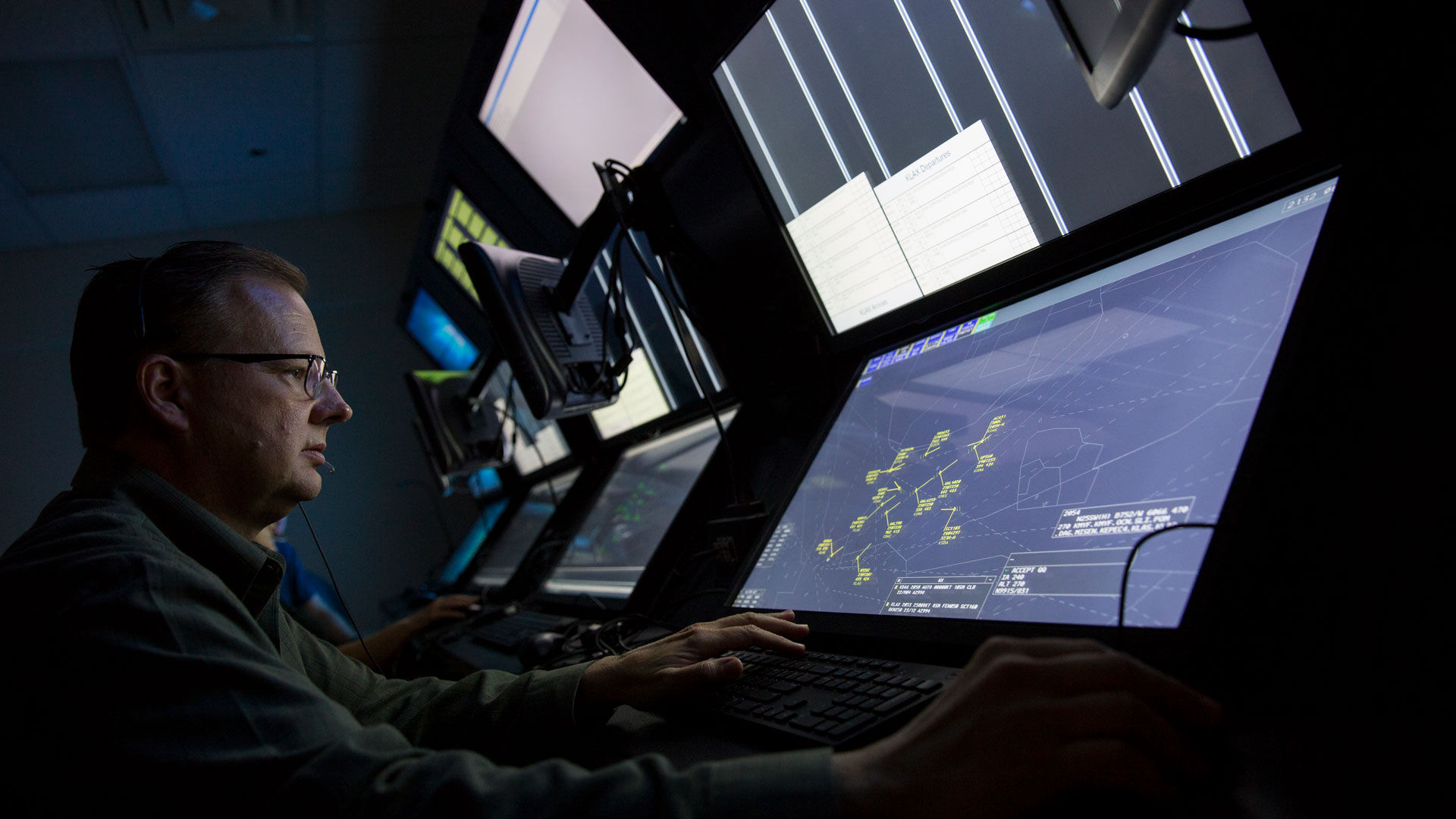
Revolutionizing air traffic control using AI
ASU faculty design a novel system to optimize safety and efficiency in air travel

A priority of any aircraft flight is safety, with risk at its highest during take-off and landing. Air traffic controllers have relied on the National Airspace System, known as NAS, data system to keep track of countless moving variables all while at the mercy of weather, scheduling and the occasionally inevitable delay.
Traffic management systems are designed to account for information based on aeronautical instrumentation, the environment, intrinsic variabilities, and human factors across the country, requiring a sophisticated level of processing power.
The structure behind air traffic control systems is expected to evolve significantly in upcoming years through the incorporation of artificial intelligence and the rise of unmanned aerial vehicles. As new software is developed to tackle such large-scale data analysis, researchers are exploring how to optimize safe flight systems to minimize risk and delay.
Yongming Liu, professor of mechanical and aerospace engineering in the School for Engineering of Matter, Transport and Energy, part of the Ira A. Fulton Schools of Engineering, and director of the Center for Complex System Safety, received funding from the NASA University Leadership Initiative to create, a novel air traffic management software platform, which will be adopted for domestic air travel in the upcoming decade.
Data-driven flights
Liu and a team of collaborators across multiple institutions are taking a proactive management approach to the nation’s evolving airspace system when developing their new software, PARAATM, or Prognostic Analysis and Reliability Assessment for Air Traffic Management. The software integrates artificial intelligence as well as radar and GPS signaling.
“We are among the first few groups to have access to this very large database shared by NASA,” Liu says. “By using the data to make predictions and action planning to mitigate the risk, it has turned out to be very successful.”
A cornerstone of their platform is to manage the human factor errors that compound risk, particularly among human air traffic controllers. Nancy Cooke, a professor in human systems engineering for The Polytechnic School, part of the Fulton Schools of Engineering, says that focusing on the impact of human behavior is vital to mitigate risk as the industry undergoes these major shifts.
“There are humans involved all across the flight experience, all the way from passengers to pilots, air traffic controllers, and flight attendants,” Cooke says. “Looking at the capabilities and limitations of humans should be core considerations of what we design.”
With data provided by NASA, the team developed a platform to collect and analyze data to optimize flights. Their software can begin planning once the aircraft is 200 miles away from the destination to begin planning landing time to arrive safer and faster. The software has also been able to predict potential issues more than a minute in advance, maximizing response time to troubleshoot.
The future of flying
The team understands that the future of aviation safety relies on training qualified students as much as advancing technologies.
“We are shaping the education of the next generation by understanding the current one, “using education to impact the future operation,” says Liu.
Qihang Xu, a mechanical engineering graduate student, says that focusing on data sources to improve air traffic management has given him insight into the fundamentals of aviation and machine learning.
“The hands-on experience I gained from this project, especially in applying book knowledge to real-world scenarios, has shaped my research approach and allowed me to apply theoretical knowledge in practical situations.”
The availability of new technology and data sources promises the possibility of reducing aviation gridlock in the sky and at airports, cutting weather-related delays and enabling air traffic controllers and pilots to see the same real-time display of air traffic for the first time. Additionally, modernizing the nation’s complex air transportation network helps ensure efficient fuel usage by airlines, reduced aircraft emissions and increased access to airports by the general aviation community.
The team has released the software for the research community to expand their toolkit and process more complex large-scale data analytics scenarios. PARAATM is expected to significantly benefit the community nationwide and globally over the next decade.
“Airspace is going to get very complex,” Cooke says. “The whole way that the air traffic control system works is supposed to change under the next generation, but safety is always going to be the most important thing.”



































